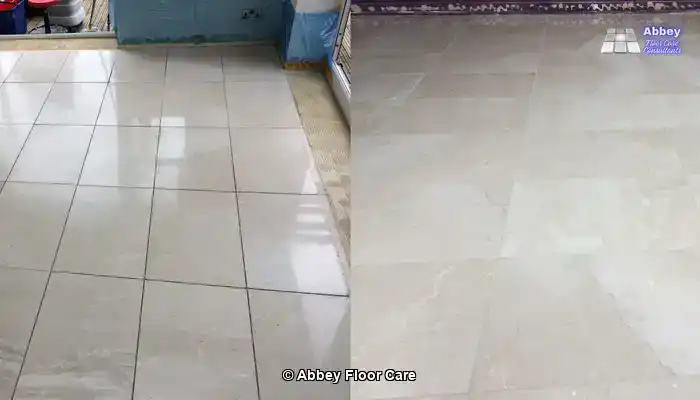Maximize the Lifespan of Your Slate Roof by Implementing Effective Flashing to Avoid Costly Leak Repairs
Flashing acts as a vital protective barrier at the most vulnerable junctions on your roof, particularly at points where tiles meet walls, chimneys, or valleys. Without proper installation of flashing, even the most meticulously laid slate roof can become prone to leaks that result in expensive repairs over time. Lead is the material of choice for flashing in slate roofing applications because it offers unmatched flexibility, durability, and a design that accommodates the natural movements of the roof structure, ensuring a robust seal that effectively prevents moisture intrusion.

Understanding Flashing: The Key to Maintaining the Integrity of Your Slate Roof
Flashing is an essential component used to seal joints and edges around various structures, including chimneys, skylights, roof valleys, and intersections where your slate roof meets walls or changes direction. These junctions are particularly susceptible to water ingress, and without effective flashing, they can be the first areas to develop leaks. In modern construction, flashing materials can vary, but for traditional slate roofing applications, lead is widely regarded as the best option.
Why is lead the preferred choice? This material not only creates an effective seal but also molds itself to create a robust barrier against various curves, slopes, and edges. It expands and contracts with temperature changes without cracking or splitting. Unlike synthetic alternatives, lead does not rust and retains its structural integrity significantly longer, often outlasting the slate itself.
The Implications of Ineffective Flashing: What Happens When It Fails?
Even the tiniest tear or gap in your flashing can lead to significant leaks. These leaks are seldom simple; water can seep beneath the tiles, reaching the underlay and eventually causing issues such as rot, mold, or damage to your internal ceilings. The ramifications of flashing failure may not be immediately visible, often taking years to manifest, leading to extensive and costly repairs. Problems related to flashing are among the leading causes of hidden roof failures.
If you notice stains on your ceiling, bubbling paint near a chimney, or patches of moss accumulating in certain areas of your roof, it could indicate deteriorating flashing as the underlying issue.
Why Lead Remains the Premier Material for Flashing in Slate Roof Applications
For centuries, lead has been the favored material for slate roofs due to its distinctive characteristics. It is recyclable, incredibly durable, and can withstand severe weather conditions, whether faced with intense heat or violent storms. The malleability of lead allows it to fit seamlessly without risking damage to the delicate slate, which is inherently fragile compared to lead.
Common applications for lead flashing include:
- Chimney flashings (both step and apron)
- Roof valleys
- Secret gutters
- Roof-to-wall junctions
- Ridge and hip intersections
- Skylight surrounds
These areas experience movement, pressure, and water runoff, making them particularly vulnerable to failure when using hard, inflexible materials that can crack or dislodge under stress.
Identifying When to Repair or Replace Your Lead Flashing
While lead flashing is generally known for its longevity, it will eventually exhibit signs of wear and tear. You should consider replacement if:
- The lead has developed splits or cracks
- It is lifting or curling away from the roofline
- Rust is visible, especially where lead intersects with other metals
- Water stains are noticeable inside your home
- You are planning a slate roof repair or rebuild
Most slate roof restorations include a comprehensive review of all leadwork. If we are already on your roof for tile replacement or cleaning, that is the perfect opportunity to assess and replace flashing as necessary.
The Importance of Professional Expertise in Leadwork Installation
Leadwork is a specialized craft that should not be left to just any general roofer or handyman. Improperly installed lead can sag, split, or detach from the slate, negating the advantages of a well-constructed slate roof. Our team utilizes traditional techniques for installing lead flashing, ensuring appropriate sizing, correct lap joints, and expansion joints that can accommodate the typical weather fluctuations experienced in Sydney. We are dedicated to using lead only where it is the most suitable material for the job.
How High-Quality Flashing Can Mitigate Future Roofing Problems
A slate roof can remain functional for a century or more, but only if its most vulnerable areas are adequately protected against the elements. Flashing and leadwork may not be the most glamorous components of a roof, but they are crucial elements that bear the weight of protection during severe weather conditions. If you observe leaks, streaks, or signs of wear around your chimney or roof edges, it is crucial to have them evaluated promptly. Replacing flashing at this stage can prevent you from facing significantly higher repair costs due to structural damage down the line.
Is It Time for a Professional Inspection of Your Leadwork?
If your slate roof features aging flashing that shows signs of wear, it is wise to have it inspected before minor issues escalate into major damage. Reach out to us today to schedule an inspection with a team that specializes in slate, lead, and the intricate details that keep your roof secure and functional.
Addressing Common Questions About Flashing and Leadwork
What exactly is flashing on a slate roof, and why is it essential?
Flashing is the material employed to seal joints and transitions within the roof—such as around chimneys, valleys, and skylights—serving to prevent water from penetrating the roofing structure.
What makes lead the preferred material for slate roof flashing?
Lead is flexible, highly durable, and resistant to harsh weather conditions. It adapts to the shapes of slate tiles and outlasts synthetic materials, making it the ideal choice for roofing applications.
What is the expected lifespan of lead flashing?
With proper installation, lead flashing can endure for over 50 years, frequently outlasting the slate roof it protects.
Can flashing be repaired without needing to replace the entire roof?
Yes, damaged or worn flashing can typically be repaired or replaced without requiring a full slate roof replacement, provided the issues are addressed promptly and professionally.
How can you identify flashing failure?
Indicators of flashing problems include water stains near chimneys, damage to ceilings, moss growth in isolated patches, or visible gaps where roof surfaces meet.
Do all slate roofs necessitate lead flashing?
Most slate roofs do. Areas such as chimneys, valleys, and wall junctions require flashing, with lead being the preferred material due to its compatibility with slate.
Is it safe to utilize lead flashing in residential properties?
Yes, when installed by professionals, lead flashing poses no safety risks and continues to be the most effective and traditional choice for slate roofs.
The Article: Leadwork and Flashing: Why It’s Crucial for a Slate Roof first appeared on https://writebuff.com
The Article Leadwork and Flashing: The Importance for Slate Roofs Was Found On https://limitsofstrategy.com
The Article Leadwork and Flashing for Slate Roofs: Why They Matter First Appeared ON
: https://ad4sc.com














Leave a Reply